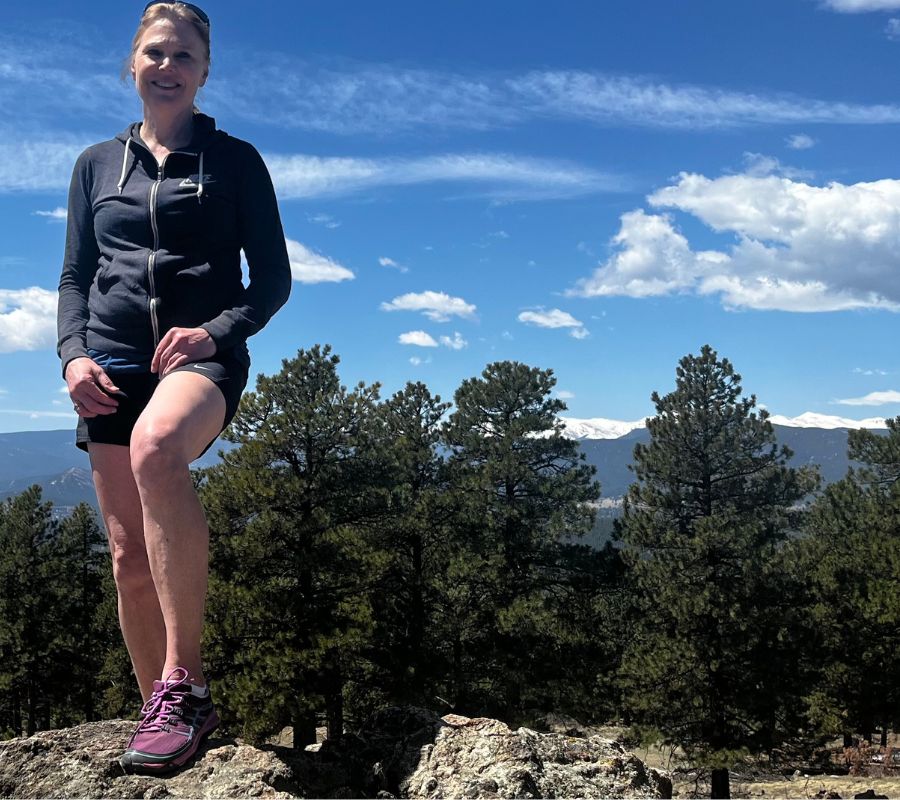What is Tension Myositis Syndrome?
Tension Myositis Syndrome occurs when the brain signals pain where there is no injury. Sometimes, an initial injury has healed, but the brain keeps signaling pain so that the pain becomes chronic. TMS is curable. Read on to learn about how I found freedom from chronic pain.

Almost any type of chronic pain or chronic discomfort can be TMS, also known as Neuroplastic Pain or Mind-body Syndrome.
When Chronic Fatigue and Pain Ruin Your Life
My Story
My story with debilitating symptoms began after college when I was working in retail management. It started with back pain. Being a workaholic (one of my unhealthy coping mechanisms), I was working excessively.
Running an hour a day was another habit I couldn’t give up, so the compulsive need to work excessively and running was a recipe for disaster.
Back Pain
One weekend, my back started hurting so badly that I couldn’t get comfortable enough to sleep. I went to the doctor but they could not find anything wrong with my back.
I went back to work and couldn’t lift a thing, but I forced myself to do what I could. After a couple of weeks, the pain got better. I wore a back brace for support and returned to my usual work schedule.
You have to understand that not being able to be busy all the time was worse than death to my type A personality. I was a go-getter. My resume said things like “Self-motivating,” “multi-tasker,” “hard worker,” and “ambitious,” which are all good traits and can get you far, but they have a cost.
Chronic Fatigue Syndrome and Fibromyalgia
About two years later, I had difficulty driving home from work because I would get so sleepy that I could barely drive. I would get home, go straight to bed without eating, and sleep all night.
This went on for a couple of weeks, and then one day, I had the strangest body aches and intense fatigue, unlike anything I had had before. I went home and didn’t return to work for a month.
The Diagnosis
My doctor could not find anything wrong. His nurse called a few days later and told me they believed I had Chronic Fatigue Syndrome, Fibromyalgia, or both and didn’t know what caused them.
I bet you can guess my next question. I asked the nurse how long it lasted, and she said about a year. Little did I know they would last twenty-plus years.
Wanting to advance in my career as fast as possible, this news left me feeling frustrated and perplexed.
Back To Work Once Again
I felt pretty good after a month, went back to work, and hit it hard again for another year. Then, the symptoms came back and got to the point where I had to take 3 months of short-term disability leave.
After jumping full force on the hamster wheel of going to doctor after doctor and practitioner after practitioner looking for answers, nothing helped. I returned to work for a few months but quit in May 1997.
New Symptoms (Multiple Chemical Sensitivities)
I became sensitive to scents and foods. Only eating meat, vegetables, and nuts for a few years left me feeling dismal. I couldn’t enjoy eating because everything had to be bland to keep my reactions to a minimum.
Having to give up most of the things I enjoyed, I became depressed and anxious. My world was very small. Occasionally, when I went to church or to the grocery store, I would wear a mask to prevent myself from reacting to all the perfumes and cleaners. Life was rough.
I had terrible pressure headaches that made it difficult to read or watch television. I laid in bed and listened to relaxation tapes to keep me from worrying about the fact that this was my life.
As a kid, I was an adventurer. I wanted to live in the mountains, hike, bike, and ski in all that beauty. I loved to travel and explore but now I couldn’t do any of that.
Healing is Possible – My Life Today
For decades, I thought I had chronic fatigue syndrome, fibromyalgia, and chronic back pain. I waited for a cure and felt hopeless and helpless like many of you.
New symptoms kept showing up, and I took a passive stance in my recovery. I thought it had to come from outside of me. But then a friend of mind told me about an app called Curable, which helped me to understand what was going on with me. Curable taught me about mind-body symptoms, and I knew immediately that I had my answer.
I had TMS, began working with a pain recovery coach, and was able to recover. My life is so much better now than it’s ever been. I play tennis again, run (in moderation), hike, bike, and spend quality time with family and friends.
And most of all, I have become certified in Pain Reprocessing Therapy and am now walking alongside others, such as yourself, to help you to recover from mind-body symptoms.
I feel safe in my life. When I wake up in the morning, I look forward to the day instead of fearing what the day might bring.
I went from feeling like a victim to feeling fulfilled and empowered. Life being this good was only a fantasy. I didn’t know this was an option, and I didn’t understand that I could choose how I wanted to think, believe, and feel in my life.
If I was able to recover from the multitude of symptoms that I had, you can too.
Now I’m Ready to Help You
I feel blessed every day to be able to move my body again, eat and drink what I want, and not have to wear a mask in the grocery store. This was before Covid, so I looked pretty silly.
Does depression around your pain and your life in general have you in its grips? Have you given up hope and resigned yourself to a life with chronic pain? Do you find yourself feeling a lot of guilt for not being able to do things with your kids? Does putting yourself first result in you feeling guilty? Do you find yourself making plans and then worrying that you won’t be able to keep them?
There Is Hope
If so, I understand, but I want you to know there is hope. You can recover and learn to live your best life. The pain-free journey is about putting yourself first and reducing the stress in your life, with very little exception.
Today, I understand that taking care of myself is okay, and if people in my life don’t like it, that’s okay, too. I have learned to have compassion for myself like I do for others. That was a foreign concept before I started working with my coach.
And now, I cope with life from a place of resiliency instead of fear. I can be comfortable in solitude and don’t need to be hypervigilant or always on high alert. Being busy and proving myself all the time is no longer my MO.
Be Happy and Live Your Best Life
I do less than my best, and that’s okay. I’m kind to myself when I make mistakes. After all, we are human.
Living lighter and in the moment brings me so much joy and happiness. The Bible says, “Do unto others as you would do unto yourself,” but in the case of people who have TMS, I say, “Do unto yourself as you would do unto others.”
Click here for Pain Recovery Coaching with Stacey, email us at [email protected], or fill out our contact form.
If you found this article helpful, we would love to hear from you. Please respond in the comment section below.


